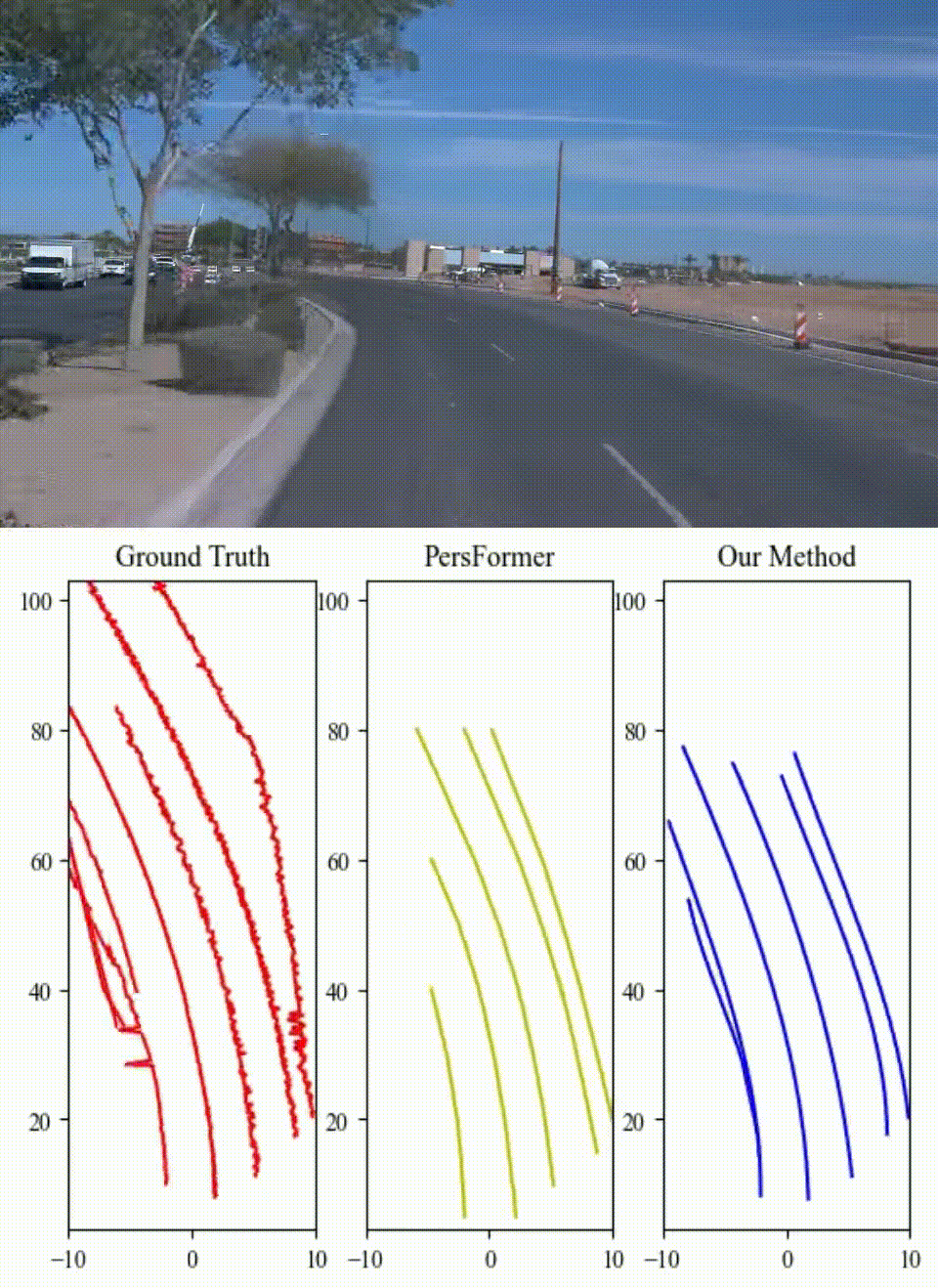BEV-LaneDet is an efficient and robust monocular 3D lane detection system. First, we introduce the Virtual Camera, which unifies the intrinsic/extrinsic parameters of cameras mounted on different vehicles to ensure the consistency of the spatial relationship between cameras. It can effectively promote the learning process due to the unified visual space. Secondly, we propose a simple but efficient 3D lane representation called Key-Points Representation. This module is more suitable for representing the complicated and diverse 3D lane structures. Finally, we present a lightweight and chip-friendly spatial transformation module called Spatial Transformation Pyramid to transform multi-scale front view features into BEV features. Experimental results demonstrate that our work outperforms the state-of-the-art approaches in terms of F-Score, being 10.6% higher on the OpenLane dataset and 5.9% higher on the Apollo 3D synthetic dataset, with a speed of 185 FPS. Our paper has been accepted by cvpr2023 arxiv.
- To run our code, make sure you are using a machine with at least one GPU.
- Setup the enviroment
pip install -r requirements.txt
-
Please refer to OpenLane for downloading OpenLane Dataset. For example: download OpenLane dataset to /dataset/openlane
-
How to train:
- Please modify the configuration in the /tools/openlane_config.py
- Execute the following code:
cd tools
python3 train_openlane.py
- How to evaluation:
- Please modify the configuration in the /tools/val_openlane.py
- Execute the following code:
cd tools
python val_openlane.py
-
Please refer to Apollo 3D Lane Synthetic for downloading Apollo 3D Lane Synthetic Dataset. For example: download OpenLane dataset to /dataset/apollo
-
How to train:
- Please modify the configuration in the /tools/apollo_config.py
- Execute the following code:
cd tools
python3 train_apollo.py
- How to evaluation:
- Please modify the configuration in the /tools/val_apollo.py
- Execute the following code:
cd tools
python val_apollo.py
| Method | F-Score | X error near | X error far | Z error near | Z error far | GFLOPs | TensorRT | PyTorch |
|---|---|---|---|---|---|---|---|---|
| Gen-LaneNet | 29.7 | 0.309 | 0.877 | 0.16 | 0.75 | 34 | – | 54FPS |
| PersFormer | 47.8 | 0.322 | 0.778 | 0.213 | 0.681 | 143 | – | 21FPS |
| Ours | 58.4 | 0.309 | 0.659 | 0.244 | 0.631 | 53 | 185FPS | 102FPS |
| Method | F-Score | X error near | X error far | Z error near | Z error far |
|---|---|---|---|---|---|
| 3D-LaneNet | 86.4 | 0.068 | 0.477 | 0.015 | 0.202 |
| Gen-LaneNet | 88.1 | 0.061 | 0.486 | 0.012 | 0.214 |
| CLGO | 91.9 | 0.061 | 0.361 | 0.029 | 0.25 |
| PersFormer | 92.9 | 0.054 | 0.356 | 0.01 | 0.234 |
| Ours | 98.7 | 0.016 | 0.242 | 0.02 | 0.216 |
CPU implementation is here: Virutal Camera on CPU
| Hardware | Single-thread | Multi-thread |
|---|---|---|
| Apple M1 | 1.5ms | 0.5ms |
| Intel Xeon Platinum 8163 @ 2.5 GHz | 5.5ms | 1.2ms |
| Nv V100 | - | TODO |
Full-length (10 mins) video of OpenLane is here: Video or you can find in https://www.youtube.com/watch?v=Mqh0N2cOctM
You can watch video of Apollo 3D Lane Synthetic in https://www.youtube.com/watch?v=WC36c4wO_QM
